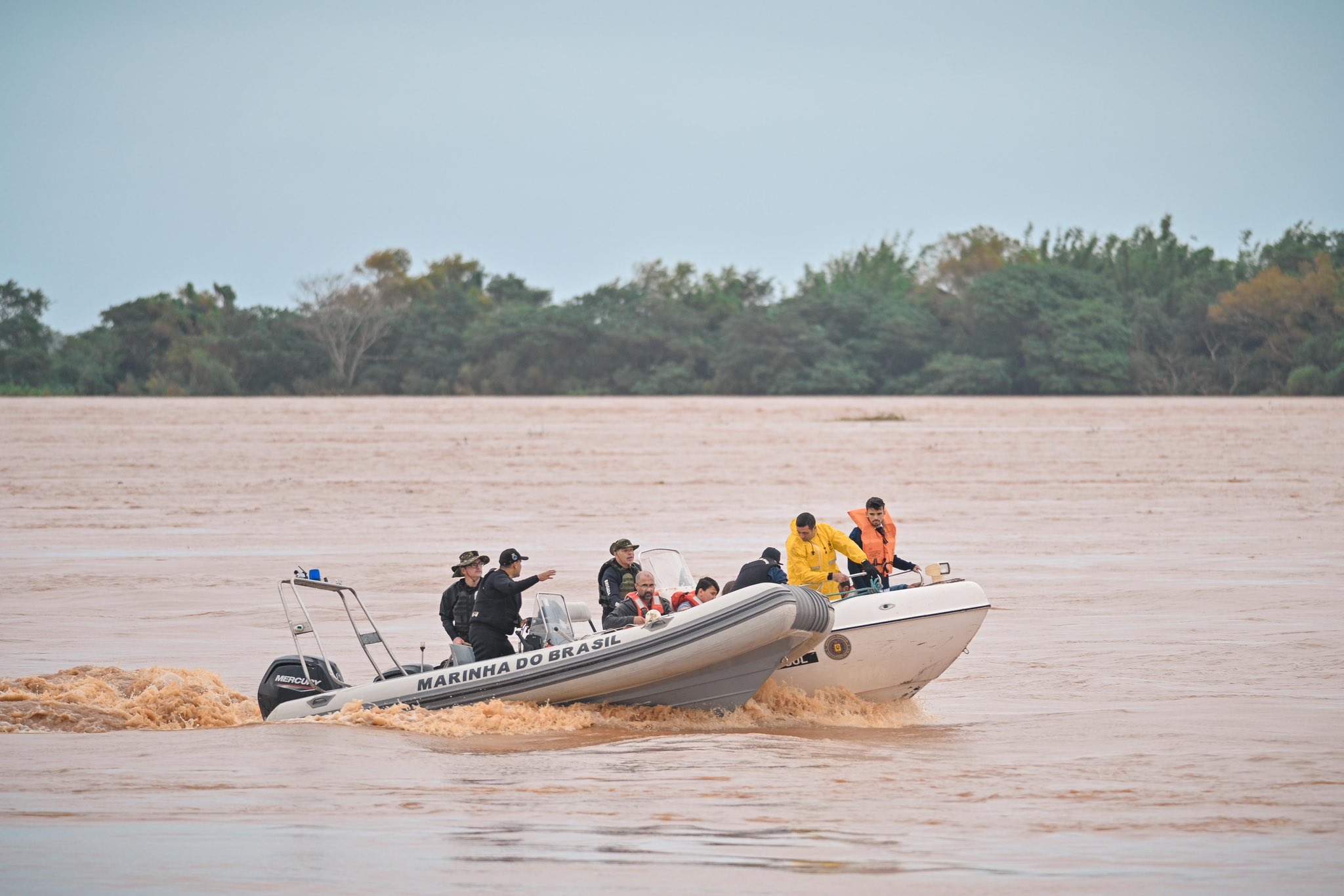

Record rainfall and flooding occurred in late April through mid-May in Rio Grande do Sul, a state in southern Brazil. Warm water in the Pacific Ocean, affected by El Niño, and very high temperatures in the South Atlantic Ocean contributed to humidity and increased the amount of rainfall.
The area received three times the average year-to-date rainfall in a two-week period, and Reuters reported that some parts of the state had received more than 25 inches of rain in May.
Located on the Guaiba River, Porto Alegre, the state’s capital, is usually a bustling city home to 1.3 million people. The airport closed for five months, and with any roads damaged well into June, residents faced reduced access to essential supplies such as food, water and gas.
Many streets flooded after the Guaíba River breached its banks in early May, reaching a high of 17.5 feet, breaking the previous record set in 1941 of 15.7 feet.
These stunning photo essays from The Washington Post and the New York Times highlight the immense destruction caused by the flooding.
(Photo: Rio Grande do Sul’s security forces work tirelessly to rescue people from flooding in Porto Alegre, May 3, 2024. Credit: Governo do Rio Grande do Sul via X)
Key facts
- Regarding impact, many people, including one economist, said this disaster was comparable to Hurricane Katrina in New Orleans. Like the disparities highlighted by Katrina, CNN said the flooding laid “bare some of the country’s persistent social problems.”
- The flooding occurred in several already marginalized communities, including 240 favelas, 40 quilombola communities (formed by descendants of enslaved people) and five Indigenous villages. Citing federal research institution Fiocruz, Agencia Brasil said, “The vulnerability of these communities is aggravated by socio-economic factors and the lack of adequate infrastructure, which are common challenges in historically marginalized regions.”
- Despite the inequality, the World Resources Institute said, “Amidst all this tragedy, we hold onto a hopeful outlook. Reports from our team in Porto Alegre indicate that the greatest rescue and assistance efforts are coming from ‘our people,’ ordinary citizens. They are people who have chosen to stay in the city and help neighbors and strangers in the most affected neighborhoods. They are risking their health and well-being to wade into the muddy waters of Guaíba that have inundated the city.”
- Rio Grande do Sul incurred over $15 billion USD in damages from the floods, and 90% of businesses in the region suffered partial or total losses.
- The state Civil Defense Agency last updated its information about flood impacts on August 20. At that time:
- There were 183 confirmed deaths, 27 missing persons, and 806 people have been injured.
- At least 422,473 people were displaced, and almost 2.4 million were affected across 478 municipalities.
- At least 77,874 people and 12,543 animals were rescued during search and rescue emergency operations.
Latest Updates
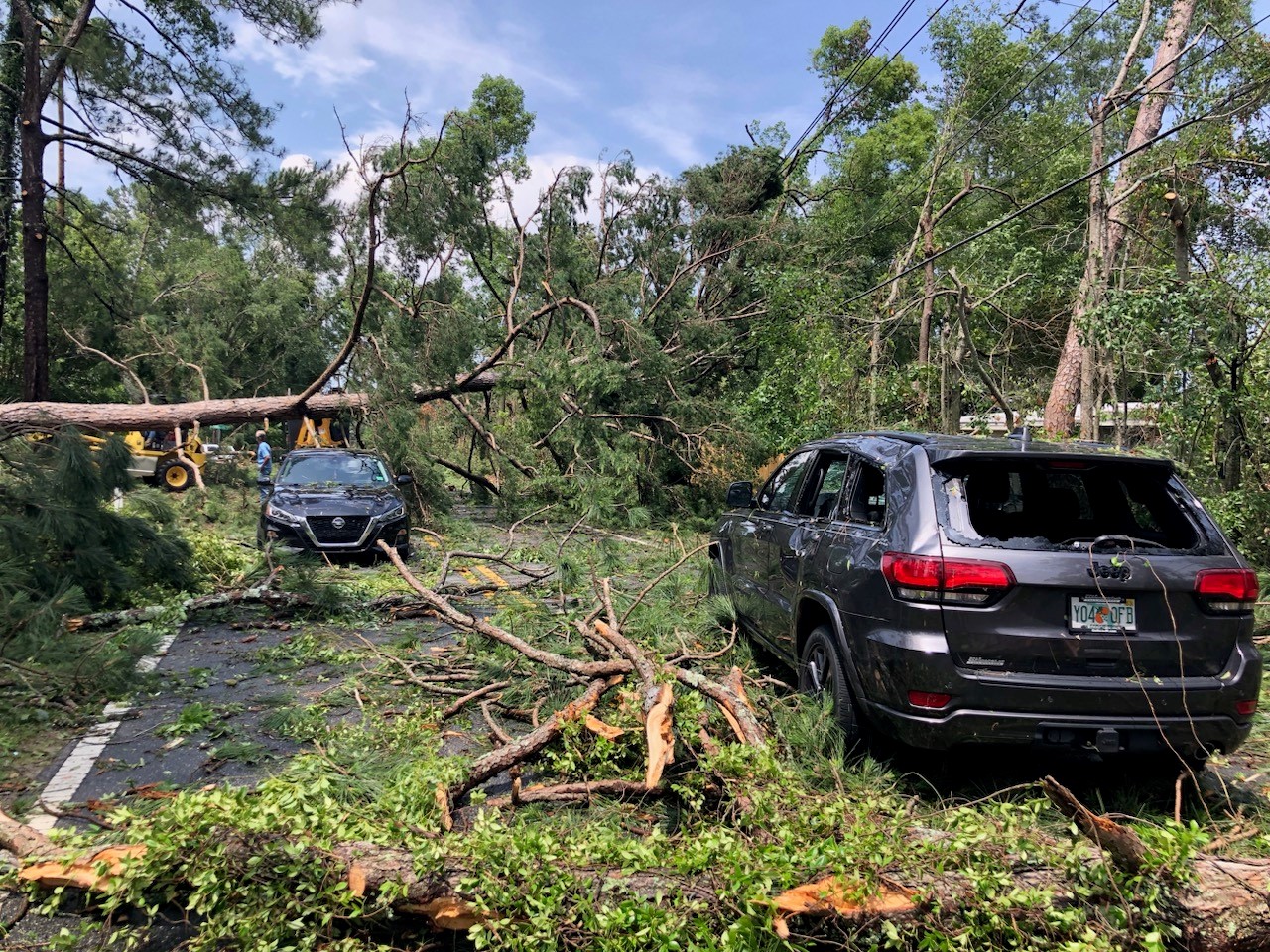
What we’re watching: Weekly disaster update, May 13
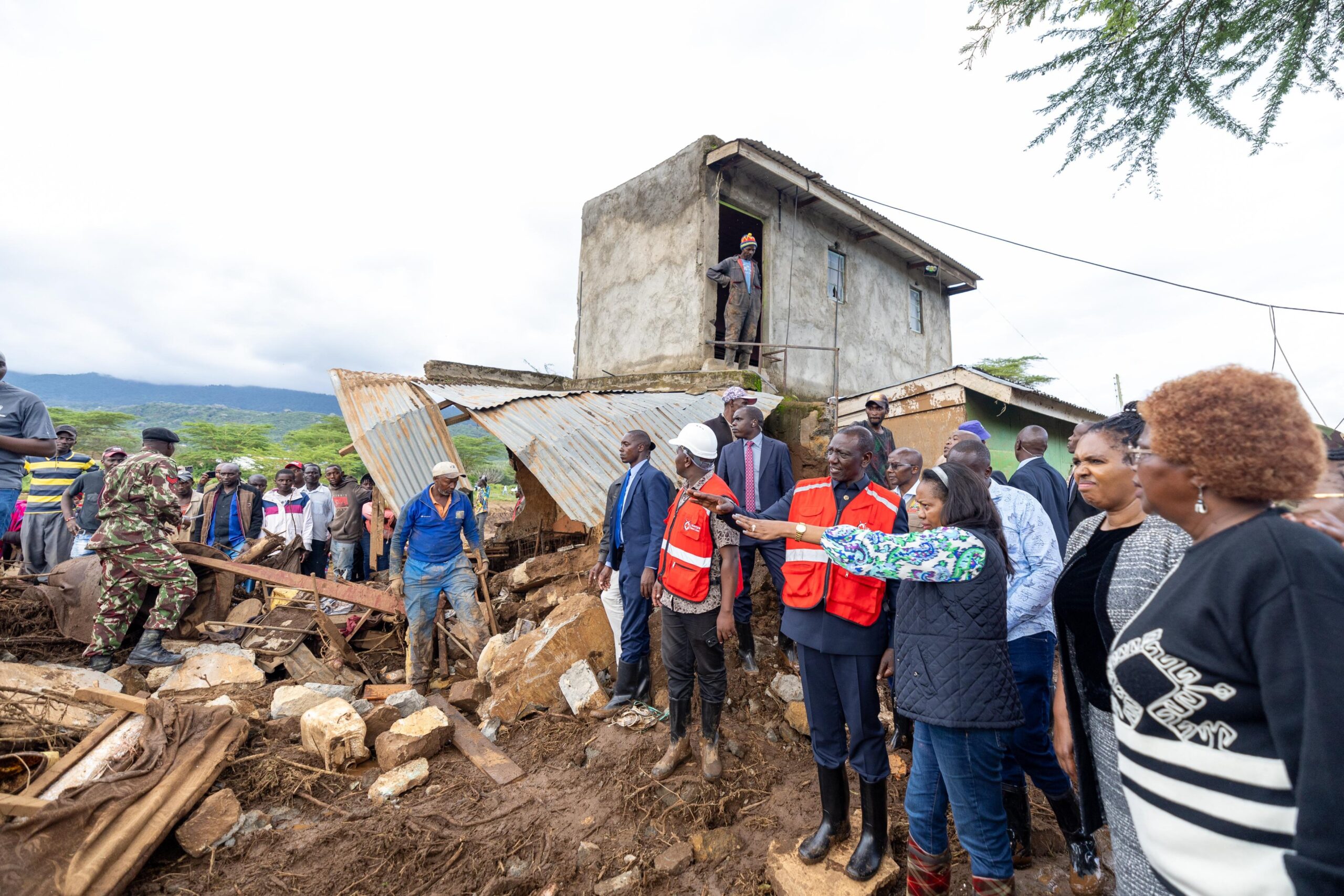
What we’re watching: Weekly disaster update, May 6
Flooding in Brazil
The 2024 floods emphasized the need for early warnings for all and a better response to El Niño, La Niña, and other weather patterns and climate change impacts.
Following the floods in Brazil in 2022, Reuters reported the flooding “[underlines] a lack of urban planning in low-income neighborhoods throughout much of Brazil, where shantytowns are often built on hillsides prone to collapse. The destruction also comes as scientists begin to question whether abnormal rain cycles in Latin America’s largest nation could be a result of climate change.”
A recent paper from the Grantham Institute for Climate Change said that because there had not been severe flood events in Porto Alegre, this “led to reduced investment, and maintenance of its flood protection system … This, in addition to the extreme nature of this event, contributed to the significant impacts of the flood and points to the need to objectively assess risk and strengthen flood infrastructure to be resilient to this and future, even more extreme, floods.”
The researchers also drew a link between poverty and flood protection systems. If there is not serious mitigation, they feel that the ongoing impacts of climate change will continue to “perpetuate inequalities in urban environments. Unprotected regions, typically inhabited by lower-income populations, face higher risks of flooding and associated impacts. This disparity creates a poverty trap, where those in unprotected areas are more susceptible to flood-related disasters, leading to repeated losses and hindered economic progress. Addressing these issues requires a comprehensive approach to urban planning and flood management that prioritises equitable protection and development.”
Housing impacts and rebuilding
At least 200,000 homes were damaged or destroyed, displacing almost 600,000 people.
People who lost their homes will need assistance rebuilding their homes. Ideally, funders can assist by rebuilding housing stock in a more flood-resilient manner by improving the quality of construction and investing in flood-resistant repair techniques.
Agricultural impacts
The corn and soy harvests were disrupted, and many fields of rice and other grains were underwater. Livestock were killed, and work at meat production plants stopped because of flooding.
Many grain silos flooded, and water sat there for weeks. Grain deliveries were disrupted due to rail disruptions and flooded roads, diverting trucks for hundreds of miles. The port is a major hub for grain exports.
Brazil’s National Confederation of Municipalities estimates more than $245 million in agriculture and livestock losses. The state is one of the major agricultural-producing states in Brazil – about 12.6% of the country’s agricultural GDP – including 70% of Brazil’s rice.
Conversely, the livestock and agricultural sectors comprise about 17% of the state’s GDP. Major crops include “soybean, rice, wheat, corn, dairy, animal protein and animal feed, fruits, and vegetables. As an impact, the Brazilian bank Bradesco forecasts a 3.5 percent recession in Brazil’s agricultural sector in 2024.”
Immediate needs included protection, emergency shelter, food and non-food items, emergency health care, agricultural support, and water, sanitation and hygiene (WASH).
Cash assistance
As with most disasters, experts recommend cash donations, which allow on-the-ground agencies to direct funds to the greatest area of need, support economic recovery and ensure in-kind donation management does not detract from disaster recovery needs.
Many people lost everything in the floods. Direct cash assistance allows families to purchase items and services locally that address their multiple needs. It gives each family flexibility and choice, ensuring that support is relevant and timely. Cash assistance can also help move families faster toward rebuilding their lives.
Health care support
During natural hazard events, health care needs may increase and result in the outbreak of diseases, especially waterborne and infectious diseases.
At least 3,000 health care facilities – doctors’ offices, pharmacies, clinics and health centers – were affected by the flooding.
This necessitated mobile clinics for those on the move and tailored services and assistance that met the needs and priorities of the communities. Additionally, funders supported rebuilding WASH infrastructure and supporting access to hygiene needs to help reduce the outbreaks of water-borne diseases.
After the flooding, there was a rise in Leptospirosis cases in the region. Officials seemed to get control of the outbreak in July without it becoming the feared epidemic.
The State Health Surveillance Center tracked the following illnesses after the flood: as of May 29, there were 2,327 reported cases of Leptospirosis, with 141 confirmed, seven deaths and 10 deaths under investigation; there was also one case of accidental tetanus, 182 rabies accidents and 28 accidents with venomous animals.
According to the Pan American Health Organization, between Epidemiological Weeks (EW) 1 and 36 in 2024, “9,569,467 dengue cases were reported representing an increase of 255% compared to the same period in 2023 and an increase of 432% compared to the last 5-year average for the same period in the country. The cumulative incidence rate as of EW 36 is 4,471 cases per 100,000 population, 7,343 dengue cases (0.08%) were characterized as severe and 5,303 fatal cases were recorded (case fatality rate 0.055%).” While not all cases of dengue are attributable to the floods, it is clear they contributed to the rise in cases.

The Center for Disaster Philanthropy (CDP) has a Global Recovery Fund that allows donors to meet the ongoing and ever-expanding challenges presented by global crises.
Contact CDP
Philanthropic contributions
If you have questions about donating to the CDP Global Recovery Fund, need help with your disaster-giving strategy or want to share how you’re responding to this disaster, please contact development.
(Photo: Flooding in Rio Grande do Sul, May 3, 2024. (Photo credit: Governo do Rio Grande do Sul via X)
Recovery updates
If you are a responding NGO, please send updates on how you are working on recovery from this disaster to Tanya Gulliver-Garcia.
We welcome the republication of our content. Please credit the Center for Disaster Philanthropy.
Resources
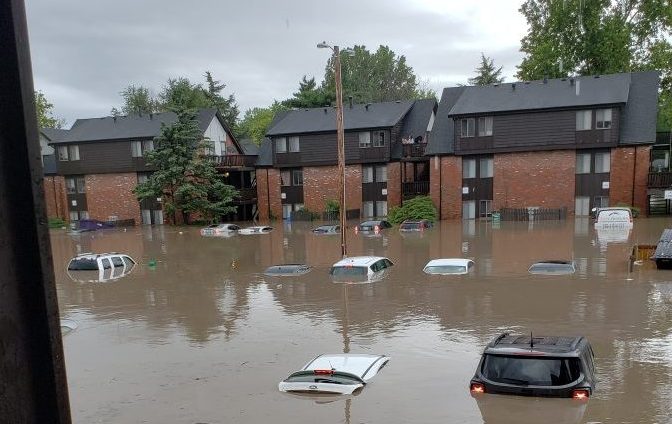
Floods
Flooding is our nation’s most common natural disaster. Regardless of whether a lake, river or ocean is actually in view, everyone is at some risk of flooding. Flash floods, tropical storms, increased urbanization and the failing of infrastructure such as dams and levees all play a part — and cause millions (sometimes billions) of dollars in damage across the U.S. each year.
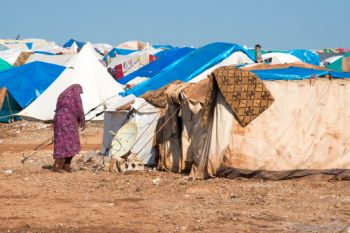
Emergency and Interim Shelter
After a disaster, shelter is more than a place to rest, it is a place of security, access to food, water and medical treatment. A place to start recovering after a disaster.

Landslides
Landslides are a movement of a mass of rock, debris or earth down a slope. Landslides are a type of ‘mass wasting,’ which denotes any down-slope movement of soil and rock under the direct influence of gravity.